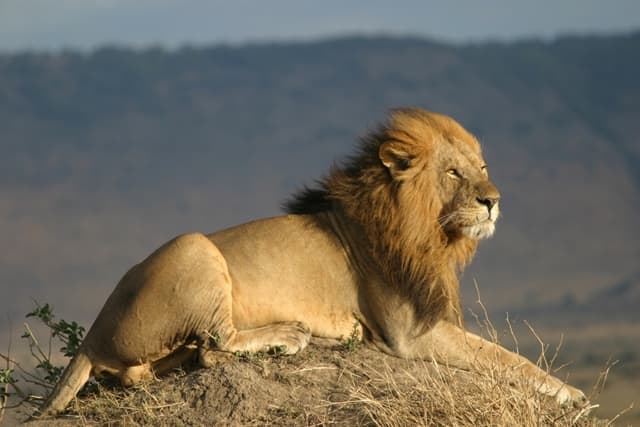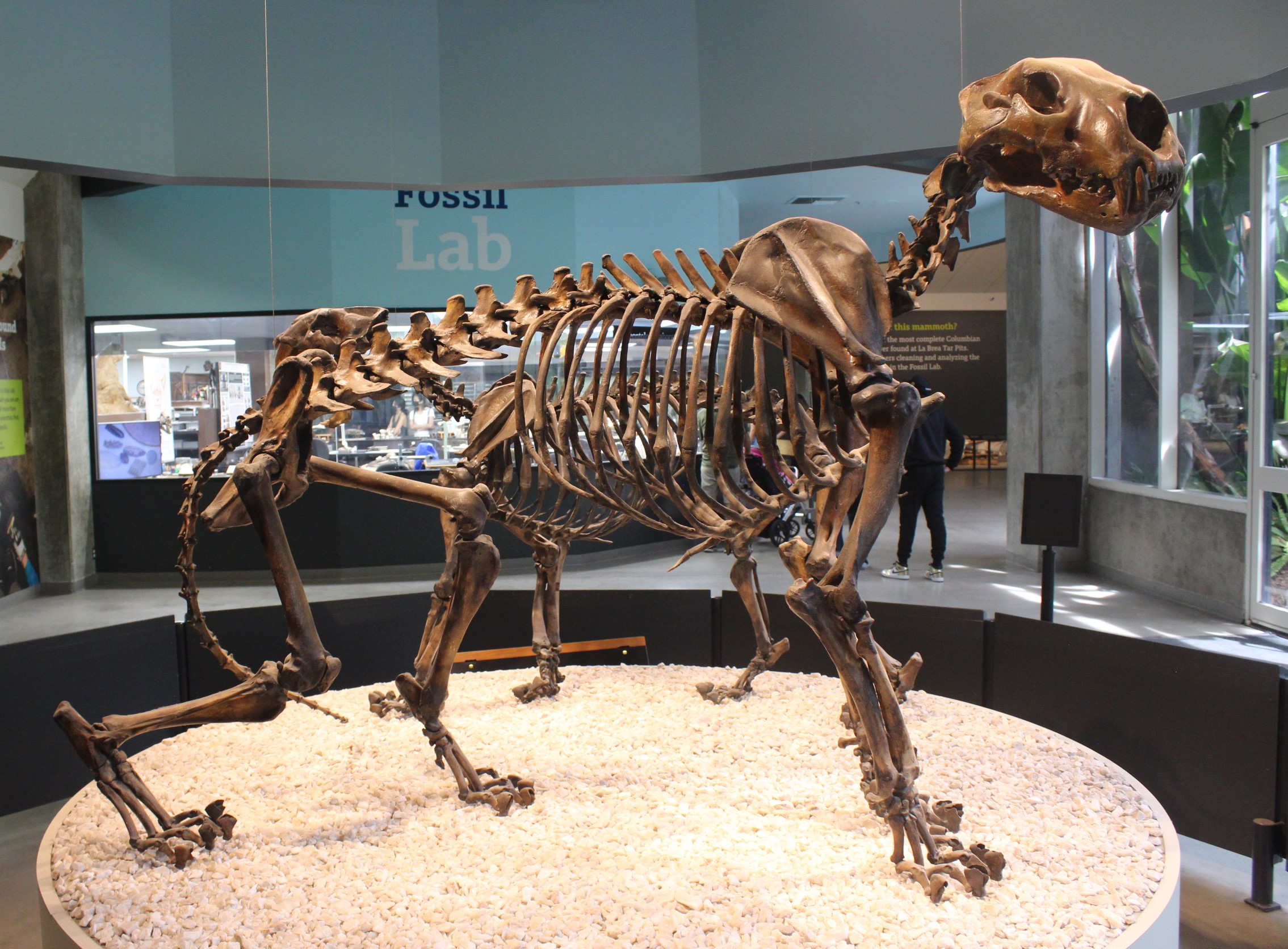Lions are one of the most iconic and recognizable animals in the world. These majestic creatures have captured the imagination of people for centuries, and have been featured in art, literature, and mythology throughout history.
While there are still several subspecies of lions that exist today, there are also several types of lions that have gone extinct over time. In this article, we will explore four extinct types of lions, including their habitats, behaviors, and the reasons for their extinction.
You are reading: Discover 4 Extinct Types Of Lions

4 Extinct Types Of Lions
Barbary Lion

The Barbary lion, also known as the North African lion, Atlas lion, and Egyptian lion, was an extinct population of the lion subspecies Panthera leo leo. It inhabited the mountains and deserts of the Maghreb in North Africa, ranging from Morocco to Egypt.
These lions were considered unique among lion populations due to their morphology and behavioral ecology. They lived in a variety of habitats in the Maghreb, including lowland coastal plains, forests, mountains, and semi-arid areas fringing the Sahara.
Barbary lions were adapted to a temperate climate with cold winters and were known for their size and dark manes. They had a more solitary existence, possibly due to lower prey densities in temperate habitats, but were also seen in family units comprising males, females, and cubs.
In Europe, these lions were admired for their strength and were even used in gladiatorial battles in the Roman Colosseum.
The extinction of the Barbary lion can be attributed to the spread of firearms and bounties for shooting lions, which led to their eradication.
While history books often state that the last wild Barbary lion was killed in 1922 by a French colonial hunter in Morocco, there is evidence to suggest that small groups of lions may have survived in Algeria until the early 1960s and in Morocco until the mid-1960s.
Read more : 8 Types Of Water Snakes
Today, the Barbary lion is locally extinct in its native range, and the only remaining individuals are found in zoos as part of a global and collaborative breeding program to ensure their future survival.
Cape Lion

The Cape lion, also known as Panthera leo melanochaita, was a distinctive population of lions that inhabited South Africa’s Natal and Cape Provinces.
It was extirpated, or locally extinct, in the mid-19th century. The type specimen of the Cape lion originated at the Cape of Good Hope and was described in 1842.
Taxonomy:
– Traditionally, the Cape lion was considered a distinct subspecies of lion, Panthera leo melanochaita.
– However, phylogeographic analysis has shown that lion populations in Southern and East Africa are closely related, leading to the recircumscription of the subspecies Panthera leo melanochaita to include all lion populations in Southern and East Africa.
The Cape lion was known for its distinctive appearance and was often described as having a black mane. It inhabited the plains of South Africa and was closely related to other lion populations in the region.
The extinction of the Cape lion can be attributed to factors such as hunting, habitat loss, and human encroachment. Today, the Cape lion is considered an extinct species, with the only remaining evidence of its existence being photographs and fossils.
Eurasian Cave Lion
The Eurasian cave lion, also known as Panthera spelaea, European cave lion, or steppe lion, was an extinct species of lion that most likely evolved in Europe after the third Cromerian interglacial stage, less than 600,000 years ago. It is estimated to have gone extinct around 12,000 years ago. This lion was highly distinct and genetically isolated from the modern lion (Panthera leo) occurring in Africa and Asia.
Characteristics:
– The Eurasian cave lion was one of the largest lion species, with males reaching a shoulder height of about 1.2 meters (3.9 feet) and a length of up to 2.1 meters (6.9 feet).
– It had a robust build, a short face, and a well-developed mane, which was likely lighter in color than that of modern lions.
Habitat and Distribution:
– The Eurasian cave lion inhabited a wide range of habitats, including open grasslands, forests, and tundra, and was distributed across Europe, Asia, and North America.
The extinction of the Eurasian cave lion is believed to be a result of climate change and/or hunting by humans. Fossil remains of this lion have been found in various locations, providing valuable insights into its morphology and distribution.
Today, the Eurasian cave lion is considered an extinct species, with its existence known only through fossils and scientific research.
American Cave Lion

Read more : 4 Types Of Wasps In Florida Ranked By The Pain Of Their Sting
The American cave lion, also known as Panthera atrox or the North American lion, was an extinct species of lion that lived in North America during the late Pleistocene epoch and the early Holocene epoch, from around 340,000 to 11,000 years ago.
Here are some characteristics and facts about the American cave lion:
Characteristics:
– The American cave lion was one of the largest lion species, with males reaching a shoulder height of about 1.3 meters (4.3 feet) and a length of up to 2.5 meters (8.2 feet).
– It had a robust build, a short face, and a well-developed mane, which was likely lighter in color than that of modern lions.
Habitat and Distribution:
– The American cave lion inhabited a wide range of habitats, including grasslands, forests, and tundra, and was distributed across North America.
The extinction of the American cave lion is believed to be a result of climate change and/or hunting by humans. Fossil remains of this lion have been found in various locations, providing valuable insights into its morphology and distribution.
Today, the American cave lion is considered an extinct species, with its existence known only through fossils and scientific research.
FAQS
1. What are the four extinct types of lions?
The four extinct types of lions are the Barbary Lion, Cape Lion, Eurasian Cave Lion, and American Cave Lion.
2. When did these lions go extinct?
Their species’ populations met their ends at different points in history, ranging from 12,000 years ago to as recently as 1922.
3. What caused the extinction of these lions?
Humans are thought to have contributed significantly to the extinction of each of these lion species, through factors such as hunting, habitat loss, and human encroachment.
4. What are some characteristics of these extinct lion species?
The Barbary Lion was known for its size and dark mane, the Cape Lion was often described as having a black mane, the Eurasian Cave Lion was one of the largest lion species with a well-developed mane, and the American Cave Lion was also one of the largest lion species with a robust build and a short face.
5. Are there any remaining individuals of these lion species?
No, these lion species are considered extinct, with their existence known only through fossils and scientific research.
6. Are there any subspecies of lions that still exist today?
Yes, there are several subspecies of lions that still exist today, including the African Lion, the Asiatic Lion, and the critically endangered West African Lion.
Source: https://petstutorial.com
Category: Animals










